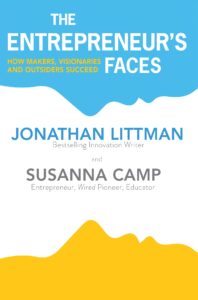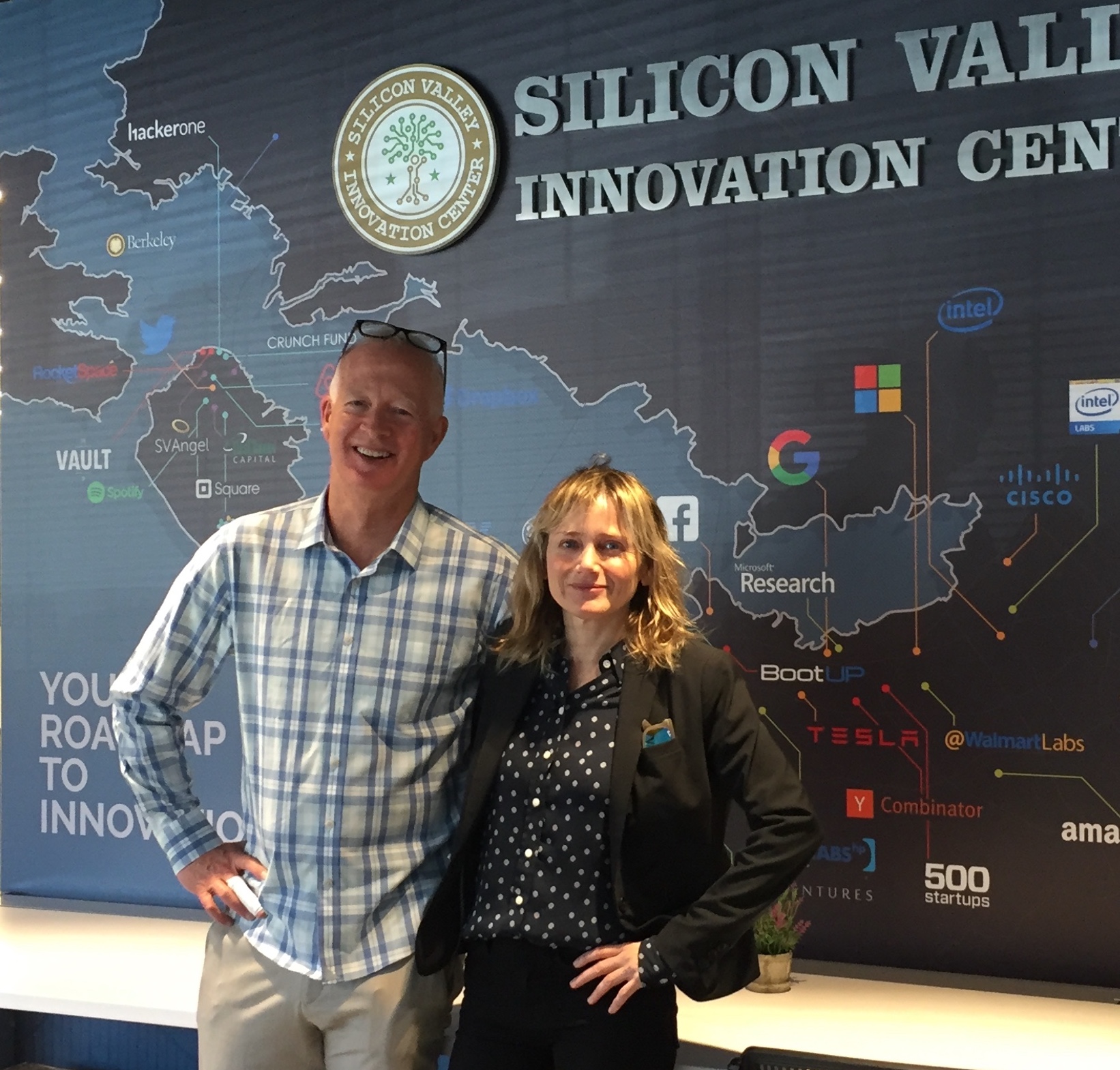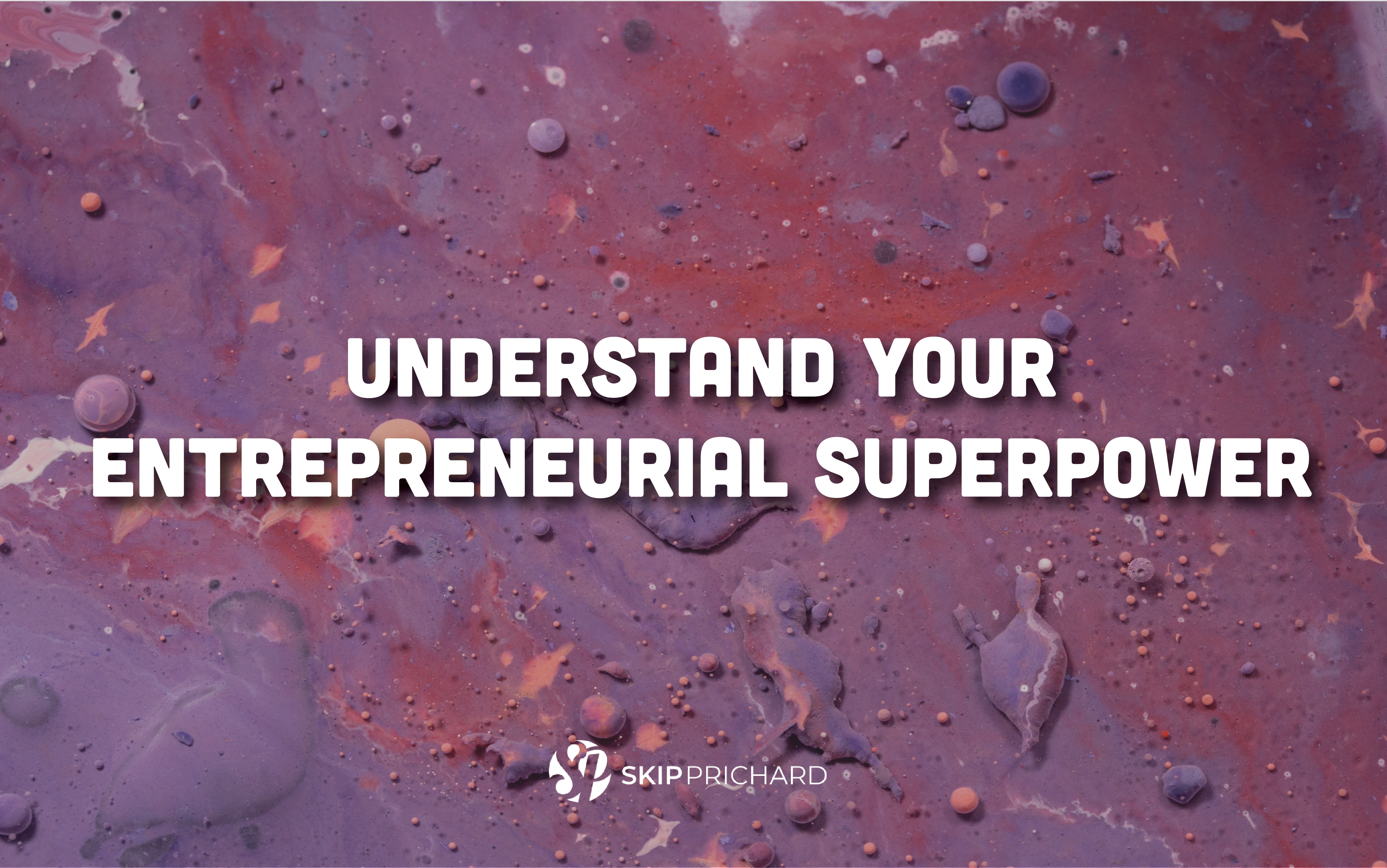Know Your Type
Did you know that there are distinct entrepreneurial archetypes? That you might be the Outsider, Maker, Conductor, or the Guardian? Understanding how to tap your own entrepreneurial superpowers is the premise of The Entrepreneur’s Faces: How Makers, Visionaries and Outsiders Succeed, a new book by Jonathan Littman and Susanna Camp. The uplifting stories of ten unique entrepreneurs form an actionable template for personal and professional growth.
Jonathan Littman collaborated with IDEO on the bestsellers The Art of Innovation and The Ten Faces of Innovation. The author of ten books, five of his works have been optioned for films. Susanna Camp is a journalist specializing in emerging technology. She was an early team leader at Wired magazine, and has also been on the staff of Macworld, PCWorld and Outside magazines.
I recently spoke with them about their work and perspective.
Tell us about the background of your book collaboration. How did it start? What’s the idea that started it?
We saw something new taking hold a few years ago – San Francisco had usurped Silicon Valley as the new center of tech innovation. The city was buzzing with excitement, with startups popping up everywhere, and events and pitch nights hosted by new incubators hoping to attract investors. A familiar theme among VCs was that chemistry and team dynamics were more important than the idea, but all the books were about building great products. So we wanted to focus on the people. And not just Americans, but the people who were flooding the city from all over the world. We started interviewing hundreds of entrepreneurs here and in Europe and found that people excelled when they embraced their uniqueness, dug in deep and specialized. During our travels and research in Estonia, Finland, Paris and California we found ten iconic individuals that encapsulate the core archetypes.
One of the main messages of your book is about recognizing who you are. What techniques have helped people in this journey?
The book is a framework for understanding the value of different types. We tell ten stories concurrently through the key stages of growth, from the initial Awakening, to the final Scale. We’ve seen that entrepreneurs learn by example, by seeking out strong role models. They glean how others tackle business opportunities, and then get out there and prototype. That’s why accelerators and incubators and tech ecosystems are so vital to this iterative process. Entrepreneurism is a good contagion. Generosity is a surprisingly important part of this journey. Aspiring entrepreneurs share skills and knowledge with others on this path and embrace a “pay it forward” mentality that opens doors. We often advise entrepreneurs to begin each week by thinking of what they can do for someone else.
How do you cultivate a discovery mindset so that you can experience the first step (Awakening)?
 No matter your core type, you can learn a tremendous amount from others. Outsiders, Accidentals and Visionaries tap their intuition and buck trends. The Outsider brings the openness of the “beginner’s mind” and flips their own lack of legacy knowledge into an advantage. For example, the founders of Airbnb were new to the hospitality industry, and that gave them an edge. The Accidentals meanwhile follow their bliss. A hobby snowballs and before they know it, they’ve created a product other people need. This was how Craig Newmark created the massive Craigslist. Visionaries have a gift for seeing what’s not there. Think of Steve Jobs, who saw that PCs desperately lacked design and graphics. He later predicted that cell phones would shed their keyboards and understood better than anyone how to build a product ecosystem. We encourage our students to make lists of products or services that seem traditional, asking them to bring a “What if?” mentality to how they interpret their world and opportunities. This is just what Joel Heath, the character we call the Athlete, did when he realized office workers needed a break from the standard desk chair and then pioneered the surfboard-like Level.
No matter your core type, you can learn a tremendous amount from others. Outsiders, Accidentals and Visionaries tap their intuition and buck trends. The Outsider brings the openness of the “beginner’s mind” and flips their own lack of legacy knowledge into an advantage. For example, the founders of Airbnb were new to the hospitality industry, and that gave them an edge. The Accidentals meanwhile follow their bliss. A hobby snowballs and before they know it, they’ve created a product other people need. This was how Craig Newmark created the massive Craigslist. Visionaries have a gift for seeing what’s not there. Think of Steve Jobs, who saw that PCs desperately lacked design and graphics. He later predicted that cell phones would shed their keyboards and understood better than anyone how to build a product ecosystem. We encourage our students to make lists of products or services that seem traditional, asking them to bring a “What if?” mentality to how they interpret their world and opportunities. This is just what Joel Heath, the character we call the Athlete, did when he realized office workers needed a break from the standard desk chair and then pioneered the surfboard-like Level.
The Shift is moving from thinking to doing. Is it common to be stuck in thinking and not shift? What factors inspire people to make this move?
Yes, for the simple reason that not everyone is a natural Maker, the type who just has to create prototypes and build product iterations. The Maker understands intuitively how to fail forward and learn from mistakes, whereas those who are not entrepreneurial will hang back and wait (sometimes too long) for the “right” moment. People are more likely to Shift when they learn to break down processes into small, tangible steps. And the first step is to accept and even celebrate imperfection as essential. To recognize that until we make something and put it out there, we really are just daydreaming. Some of our favorite entrepreneurs are incredibly fast at exploring new ideas and seeing what sticks. They’re prolific. They’re smart, but they often release products that others might consider a B or B+ effort. That willingness to experiment, to test, means they are more likely to be in the right place at the right time.
Without going through all the steps, let’s move to “the Money.” Obtaining the backing to make it happen is not the favorite step for many entrepreneurs. Talk about this step and how the successful best tackle it.
Many would-be entrepreneurs forget that they need to prove out the sales model early and often. The classic salesperson is the type we call the Evangelist, who’s great at Knowing Your Customer and pitching winning stories. Those who succeed approach fundraising more like a sprint than a marathon. In The Entrepreneur’s Faces, we chronicle the Stanford Launchpad accelerator where the professors challenge students to raise money fast, with energy and intensity. “Get it done,” they say. “If it’s taking longer than 30 days, it’s not going well.” This discipline focuses founders on developing the necessary urgency to launch a winning product.
One potential pitfall in this stage is to assume that all angels and VCs are alike. Read up on everyone you pitch. Make sure they have a genuine interest in your market and learn key details about their successes. Whether you’re crowdfunding, seeking VC backing, or selling direct to consumers, know how to pitch a story that moves your audience, and you just might get the money.

When I read “passing the Test” I was reminded that these steps are not only for entrepreneurs, but really for any successful endeavor. We all are tested in this way, aren’t we? What are some of the best ways we pass this test? What elements go into this success?
The stage we call the Test is where our classic leadership archetypes – the Conductor, Guardian and Leader – become even more important. Success comes from maintaining momentum. The Test is where you either make it or don’t, where your business model proves out or falls flat. Effort matters here. Working nights and long weekends, bringing in the right synergistic team members. Perhaps paradoxically, the Test is often where entrepreneurs and founders make sudden changes or a pivot. You may have to cut costs dramatically. Fire people. Rapidly shift your value proposition or target market. Speed beats caution. Here’s an example we all saw this spring. Airbnb, with its worldwide properties suddenly empty, was running out of cash. The firm gave up a big chunk of equity to secure enough capital to survive the pandemic downturn. The rest is history: Airbnb went public in a spectacular offering that valued the firm at $100 billion. They passed the Test.
How do leaders of organizations (versus startups or entrepreneurs) benefit from your perspectives?
The pandemic has forced nearly everyone and every organization to be entrepreneurial. Those who clung to their 2020 plans floundered. Habits have shifted irrevocably. Our attitudes toward work, leisure, food and family have forever changed – and there will be no new normal, but rather a willingness to embrace uncertainty. We all need to learn to adopt ever-faster cycles of adaptation and change.
For more information, see The Entrepreneur’s Faces: How Makers, Visionaries and Outsiders Succeed .

